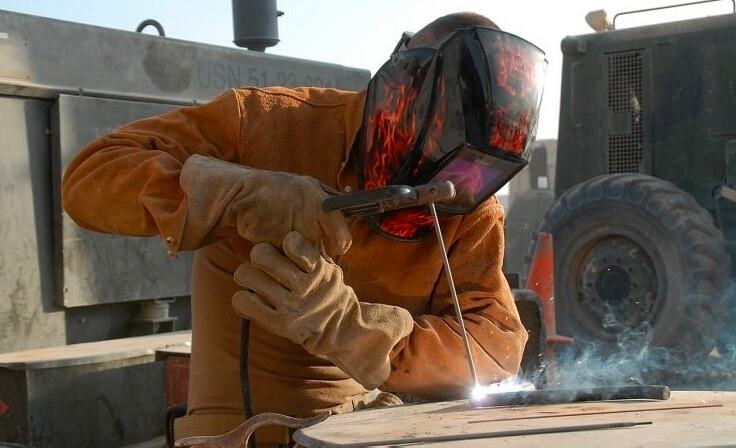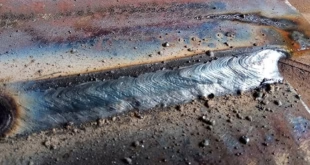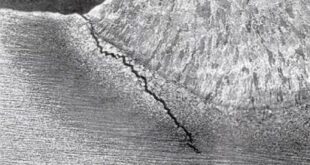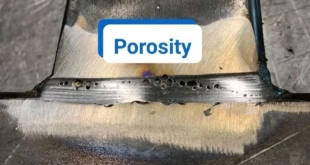How to Prevent Welding Rod Sticking
Definition and Explanation
Welding rod sticking occurs when the electrode fuses slightly to the workpiece without establishing a stable arc. Instead of a clean ignition, the rod stops conducting properly and becomes part of the base metal until you yank it free.

Arc Initiation vs. Rod Adhesion
Starting an arc requires a quick and momentary contact between the rod and metal. If the contact is too long or the amperage is too low, the rod will adhere to the surface before an arc can stabilize.
Sticking and Amperage Relationship
The number one cause of rod sticking is low amperage. If the current isn’t strong enough to maintain the arc, it breaks and leaves the rod partially melted onto the metal.
Root Causes of Welding Rod Sticking
1.Low Amperage Settings
Running your machine too cold prevents the arc from fully developing. This is especially true for thick rods like 1/8″ or 5/32″.
2.Poor Grounding or Loose Work Clamp
If your ground clamp is loose, rusty, or not connected to clean metal, you’ll get inconsistent current flow, making it hard for the arc to start or stay lit.
3.Inadequate Striking Technique
Striking an arc is an art. A poor strike—either too slow or too forceful—can cause sticking instantly. It’s like trying to light a match with gloves on.
4.Dirty or Contaminated Base Metal
Rust, paint, oil, or mill scale can prevent good electrical contact and mess with arc stability.
5.Incorrect Electrode Angle and Travel Speed
Holding the rod at the wrong angle or moving too slowly lets the flux melt unevenly, increasing the chance of sticking.
6.Damp or Damaged Electrodes
If your rods absorb moisture, the flux breaks down during ignition. It’s like trying to start a fire with wet wood.
Step-by-Step Guide to Prevent Welding Rod Sticking
Step 1: Set the Correct Amperage
Manufacturer’s Electrode Chart
Every electrode box has an amperage recommendation. Stick to it. For example, a 1/8″ E6013 runs well between 90–130 amps on DC.
Adjusting for Rod Diameter and Metal Thickness
Thicker metal needs higher amps. Likewise, bigger electrodes require more heat to keep the arc burning clean.
Step 2: Improve Arc Striking Technique
Tapping vs. Scratching Methods
Tapping: Quick downward tap and pull back to ignite the arc.
Scratching: Drag the rod slightly like striking a match, then lift just enough to form a stable arc.
Practice Tips for Smooth Ignition
Try striking on scrap metal until you can consistently start the arc with no sticking. It builds muscle memory.
Step 3: Maintain a Clean Ground Connection
Inspecting the Clamp and Ground Area
Check your clamp for rust, oil, or paint. A clean metal surface ensures strong conductivity.
Importance of Metal-to-Metal Contact
Always clamp to bare metal. If needed, grind off paint or mill scale before clamping.
Step 4: Keep the Base Metal Clean
Remove Rust, Oil, Paint, and Dirt
Contaminants can mess with conductivity and disrupt the arc.
Pre-cleaning with Wire Brush or Grinder
A simple wire brush or angle grinder preps the surface for optimal arc performance.
Step 5: Control Travel Speed and Angle
Ideal Rod Angles for SMAW
Flat position: 10–15° drag angle
Vertical or overhead: More advanced angles based on position
Consistent Movement for Stable Arc
Don’t linger. Move steadily to prevent excessive buildup and sticking.
Step 6: Use the Right Type and Size of Electrode
Matching Rod to Metal Type and Position
E6010 or E6011 for penetration; E7018 for strength and appearance. Match rod to the job.
Popular Choices to Minimize Stick
For beginners, E6013 and E6011 offer smoother arc starts and less sticking.
Step 7: Store Rods Properly to Avoid Moisture
Effects of Moisture on Flux
Moisture causes erratic arcs, sticking, and porosity in the weld. Store rods dry!
Using Rod Ovens or Airtight Containers
If you don’t have a rod oven, use sealed containers with desiccant packs.
Additional Pro Tips for Beginners
Use AC for Easy Start with Certain Rods
Some rods (like E6011) are more forgiving on AC machines, which can be helpful for beginners.
Start on Scrap Metal Before the Actual Weld
Practice arc strikes on scrap to warm up and adjust your amperage if needed.
Choose Easy-to-Use Electrodes for Practice
E6013 is user-friendly, smooth running, and perfect for learning without frustration.
Common Myths About Welding Rod Sticking
“All Stick Welding Is Messy”
That’s just bad technique. With proper settings and clean metal, stick welding can be very clean and controlled.
“Higher Amps Always Solve the Problem”
Too much amperage can cause the rod to overheat and create burn-through or spatter. It’s about balance, not brute force.
FAQs
Why does my welding rod keep sticking even when I increase the amps?
You may be holding too tight to the base metal, or your ground might be weak. Also, poor striking technique or contaminated surfaces can still cause sticking, regardless of amperage.
What’s the easiest welding rod for beginners to avoid sticking?
E6013 is widely recommended for its smooth arc and ease of use, especially on clean steel with smaller thicknesses.
Can a bad ground really make my rod stick?
Yes, a poor ground causes inconsistent current, which makes arc initiation unstable and increases the chance of sticking.
Is rod sticking bad for my welder?
Occasional sticking won’t hurt your machine, but repeated or extended shorts can overheat components and damage your leads or electrodes.
How do I strike an arc without sticking the rod?
Use a quick tap or scratch method, then lift slightly to let the arc establish. Practice helps develop the right feel and timing.
Conclusion
Welding rod sticking is a common challenge, especially for beginners, but it’s also one of the easiest to fix with some attention to technique and settings. Proper amperage, clean surfaces, dry rods, and confident arc striking will dramatically reduce your chances of sticking. Once you master these basics, your welds will be cleaner, your frustration lower, and your skills more professional.
Stick welding is as much about feel as it is about science. The more you practice these techniques, the more second-nature they’ll become. In the end, preventing rod sticking is about creating harmony between current, technique, and metal.
 Welding of Welders All about Welding and Welders
Welding of Welders All about Welding and Welders



